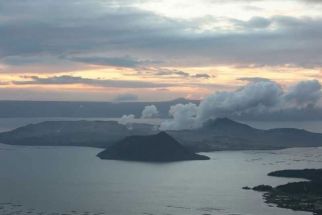Poor boiler maintenance blamed for cruise ship blast that hurt Pinoy crewmen
MIAMI (AP) – A boiler explosion that killed eight crewmembers and injured some Filipinos on what was once the world’s largest passenger ship was likely caused by Norwegian Cruise Line’s improper operation, maintenance and inspection of the steam chamber, federal investigators said.
Several injured Filipino crewmembers and victims’ survivors sued the cruise line after the May 2003 incident, but a federal appeals court ruled that they had to pursue their financial claims in the
Part of the boiler on the SS Norway had “extensive fatigue cracking” and deteriorated materials that weakened the metal and caused it to rupture under the intense steam pressure in May 2003, the National Transportation Safety Board said in a report quietly adopted in October.
The line’s only steam-powered ship was docked in
Evidence “indicates that NCL shipboard engineers were aware of the cracking condition but did not take appropriate action to fix the problem,” the report said.
The investigation also found evidence that the cruise line heated and cooled the boiler too quickly, which stresses the metal by expanding it and contracting it under great pressure.
The Miami-based cruise line, owned by
“None of the management or contractors who were involved in the operation, maintenance or inspection of the
The boiler was likely pitted from corrosion that the line should have prevented by better controlling chemicals in the chamber, the board said, noting that the company had been warned about the problem before the explosion.
The report said that the cruise line and an outside inspection company did not properly examine the boiler to check it for damage.
The outside company, Bureau Veritas, had workers outside the boiler look in with a flashlight, instead of having them crawl inside for a more thorough inspection, the report said.
The report also said maintenance workers did not take into account how many times the boiler was heated up and cooled down.
Bureau Veritas officials had no immediate comment.
The boiler cracks were first found in the 1970s, when the ship was owned by another company and known as the SS France. Norwegian bought the ship in 1979, detected more cracks over the years and patched them up with “questionable weld repair procedures,” the NTSB report said.
The ship sustained about $20 million of damage from the blast and was retired from service. It is now being scrapped off the coast of
Also known as the Blue Lady, it was made in
At 1,035 feet, it was four feet longer than the Queen Elizabeth, and 153 feet longer than the tragic Titanic.
- Latest
- Trending


































